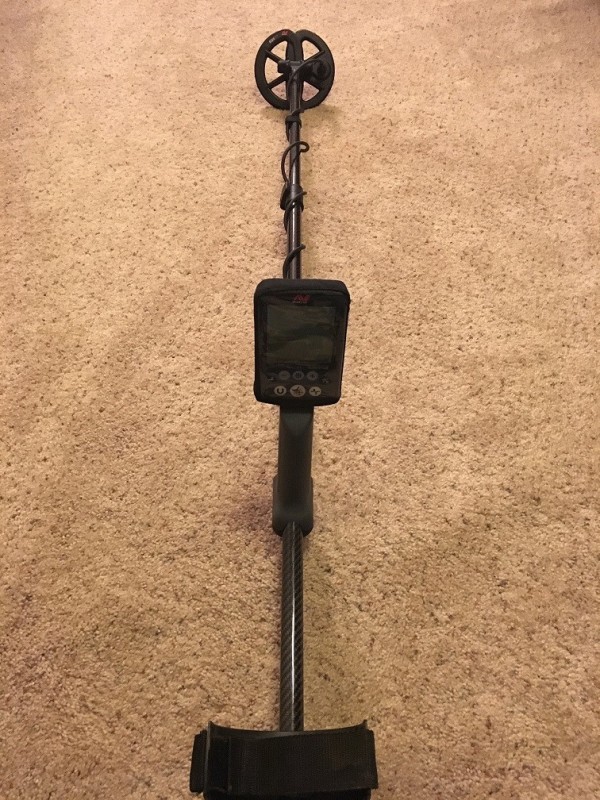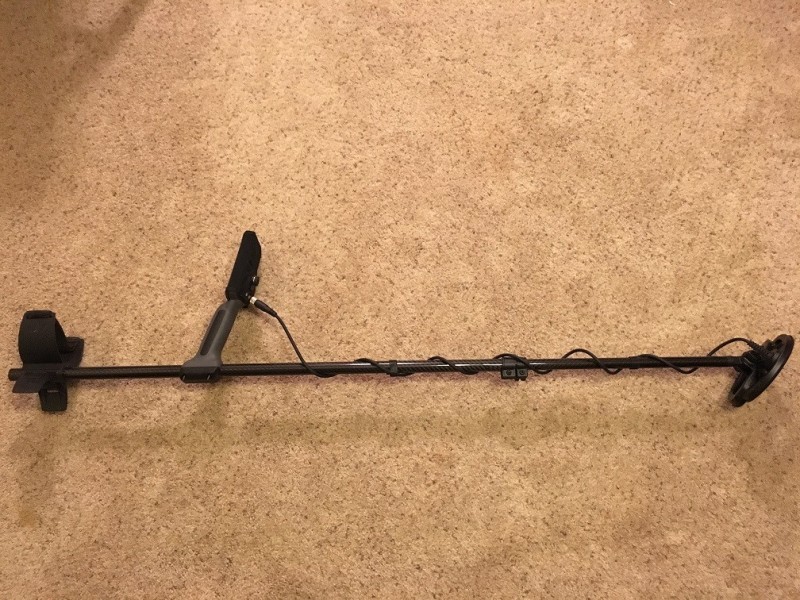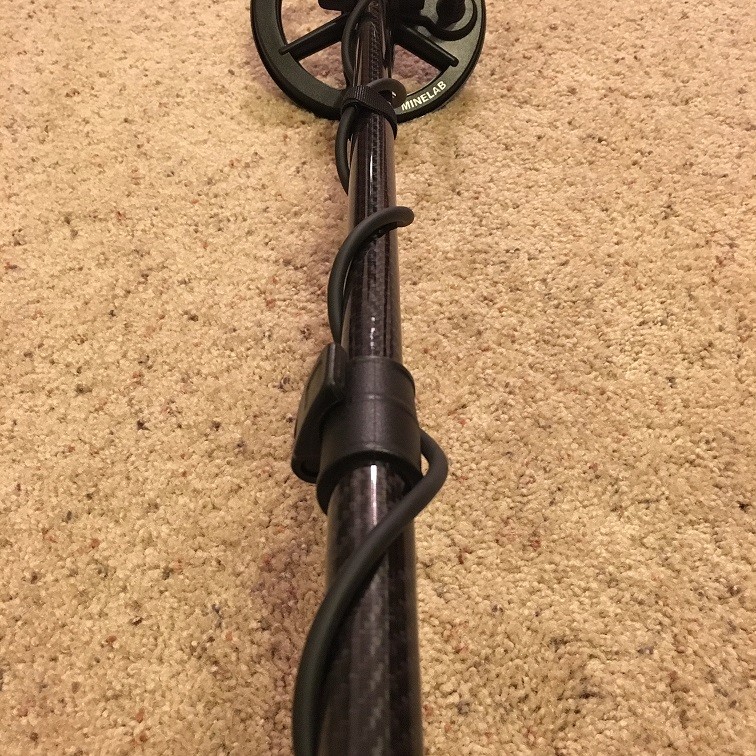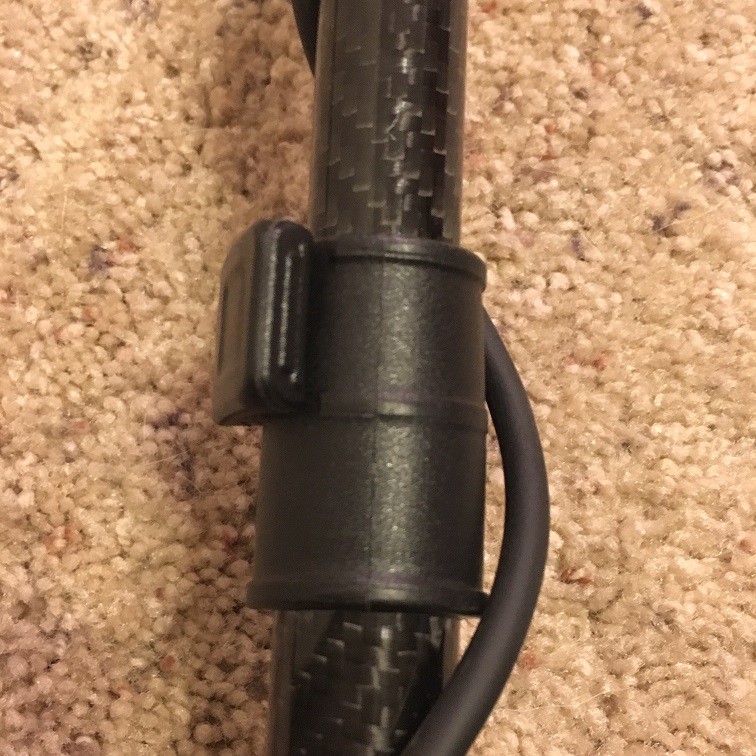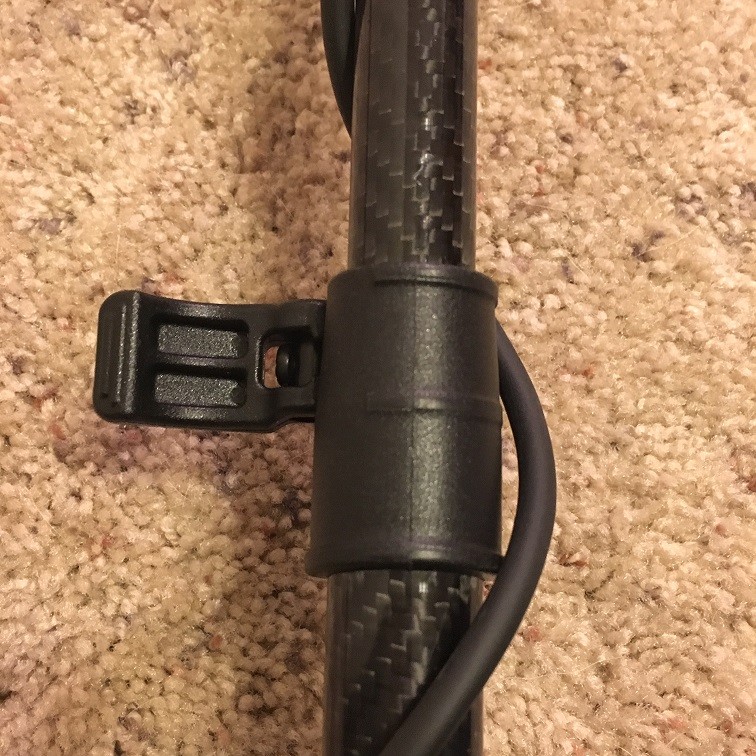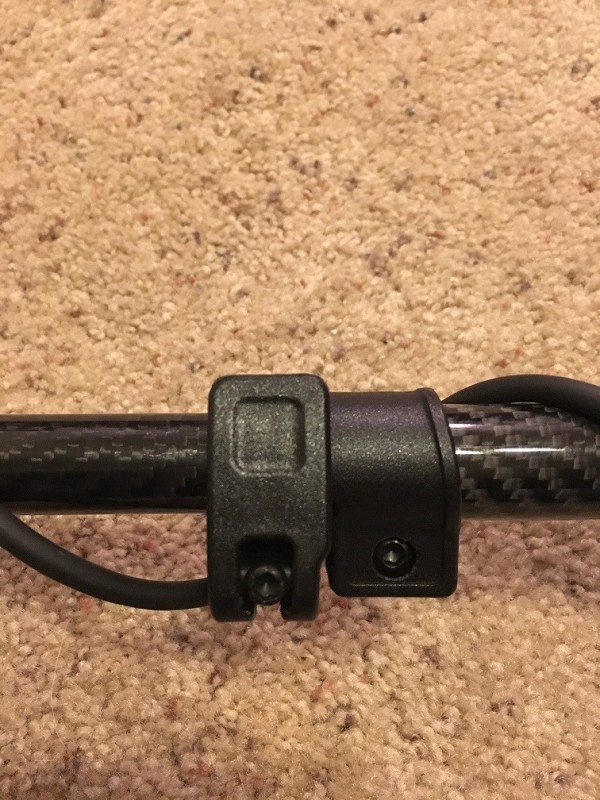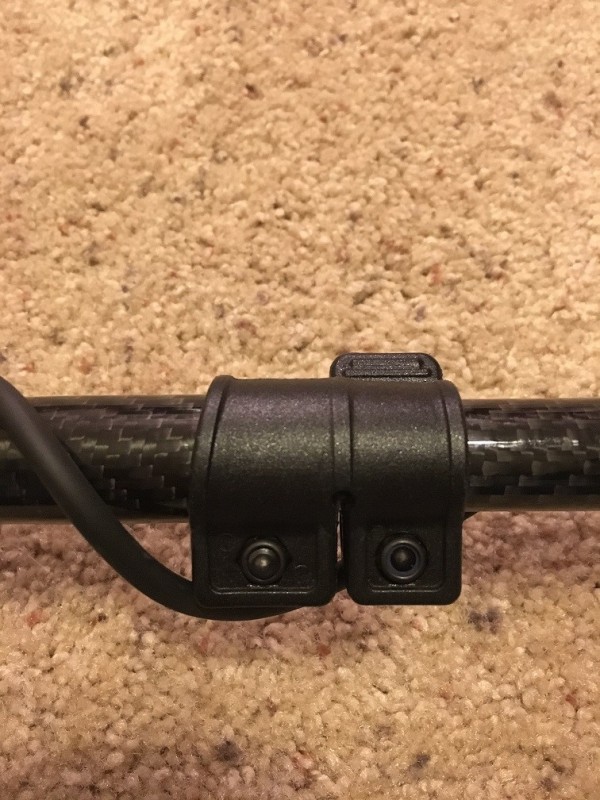
steveg
Full Member-
Posts
1,206 -
Joined
-
Last visited
-
Days Won
2
Content Type
Forums
Detector Prospector Home
Detector Database
Downloads
Everything posted by steveg
-
SOHN -- got it! Thank you for your reply! Yes, it would be lead-filled tubes, no "ball" of any sort on the end. I will not derail your post any further! ? Thanks! Steve
-
Gentlemen... I am still pondering this idea (of "telescopic" counterweights) a bit more; as I said, I ruled it out initially, due to the lack of telescopic distance available, AND to the fact that the counterweights would have to be longer, due to the smaller-diameter tubes. I calculated how much longer of a tube would be needed to achieve the same amount of weight; I can get roughly 8 oz. of lead pellets in a roughly 5" tube that is the diameter of the upper shaft. I calculated that it would take about a 6 1/4" long tube, the diameter of the lower shaft, to get that same 8 oz. of lead pellets inside. Hmm. Not TOO terribly much longer. I know this is taking this thread WAY off topic, but -- let's say there was only that 1 1/2" or so of telescopic ability -- i.e. not that much. Would it still be a better idea, in your minds, to attach/detach a slightly longer tube, via a clamping cam lock, versus unscrewing tubes via threaded connectors? Just curious... Steve
-
Gents -- THANK YOU for the thoughts. It is a very good idea in concept -- as having a telescopic counterweight system WOULD INDEED allow adjustment in the balance point simply by sliding the weight in and out (moving it nearer or farther from the "fulcrum"). However, I opted for screw-in, versus telescopic, for two reasons... 1. If I went telescopic, one of my concerns was that the tube containing the weight would have to be smaller in diameter than the upper shaft to permit the telescopy -- i.e. I would need the tube to be of the diameter of the lower rod. And that smaller-diameter tube would accommodate less lead, per inch, and thus would mean that longer lengths of counterweights would be needed to achieve the same "balance." And I know many folks would like to keep those extensions as short as possible. 2. More significantly, though, is this -- the amount of distance available to "telescope" the counterweights into the butt-end of the upper shaft is EXTREMELY LIMITED, due to the through-bolt that holds the arm cuff. This is especially problematic for someone who uses the "most rearward" arm cuff hole -- in which case you'd only have about 1 3/8" of telescopic capability, as limited by that through bolt. So, while in the absence of the arm-cuff through bolt, the "cam lock/telescopic counterweight" idea is superior in theory, these were the limitations that led me to opt for the "screw-in" idea. The ONLY way I know of, to use the telescopic idea, would be to make the shaft longer at the butt end -- i.e. -- lengthen the part that extends beyond the arm cuff holes, and then put the cam lock out there at the butt end of the now-longer shaft. Then, the counterweight would have more "shaft" to telescope into. The problem there is, shipping boxes I have been able to procure are limited to 37" in length...so I really can only add about an inch additional to the butt end...which would only increase telescopic capability (if using the rear-most cuff hole to about 2 3/8")... Thoughts? Steve
-
dew -- I do think the one on the right has a bit more "surface area" that contacts the smaller (lower) rod, as you are noting. But at this point, I'm not sure that the additional "surface area" is resulting in stronger clamping strength...both clamp extremely securely. Here is a question; is it in any way a "hindrance" to folks, having the adjustment screw require an Allen wrench? Would that be something folks would be unhappy with? Would a thumb screw instead, for adjustment of the clamping lever tension, be a "make-or-break" feature? Steve
-
schoolofhardNox -- I KNOW you were not trying to diss anyone, and you didn't! ? I was responding to your post as much from "surprise," as anything. I had never heard of a carbon-fiber detector rod/shaft "snapping," or breaking, and while it does not surprise me that it COULD happen, under extreme circumstances, I was surprised that you knew of numerous instances... In your first two pictures, with the crack running along the length of the shaft, that one makes ZERO sense to me. Carbon-fiber tubes are made by wrapping sheets of woven carbon fiber, with glue/epoxy on them, around a metal rod that acts as a "form." Multiple layers of this woven carbon fiber are wrapped, as I understand it, and then allowed to cure/harden. Point being, the "weave" of the carbon fiber, in those multiple layers, should absolutely preclude such a straight-line "split" as is shown in that first picture -- to the degree that it makes me question whether that is actually a carbon-fiber tube at all... The second two pictures show more of what I would expect a broken carbon-fiber tube to look like -- i.e. the rough/uneven edge of the break. HOWEVER, in that second picture, that tube looks EXTREMELY thin...hard to tell in the picture, but it looks like it might even only be a millimeter or so...and so I'm not entirely surprised that one broke. A normal "standard" wall thickness for a carbon-fiber tube is 2mm; the ones I use on my CTX 3030 lower rods, for instance, are actually 2.6 mm thick...which brings me to your next picture. I've never seen a CTX rod break; even the factory Minelab rods are fairly stout/high-quality. I understand that there could be significant forces applied to the rod, when hunting with a big coil in heavy surf (LOTS of drag/leverage applied to the rod, focused at that "connection point.") Still, that's a surprising break to me; I wonder if sand was involved, such that over time, sand "wore down" the tube, right there at that connection point -- progressively introducing a small/focused "weak point" in the tube and thus facilitating that break. IN ANY CASE, thanks for sharing the pictures. I can see why you'd be a bit spooked by those experiences. I can tell you that on my end, I have never had a customer with a tube breakage failure, and can't imagine that I will. I'll never say "never," but I think it would be an unusual/rare circumstance. Like I said, I'm more than happy to send you some sample pieces -- I have lots, that I've cut off the end of my tubes when building rods, and you could have a look for yourself (IF, that is, you think you ever might want to purchase a rod/shaft from me for your CTX or EQX, and feel that it could be helpful toward easing any concerns you might have). Otherwise, thanks for the interaction! I appreciate it! Steve www.stevesdetectorrods.com www.facebook.com/stevesdetectorrods
-
Terry -- Consider it done, thank you very much! Nakky -- I need to check and see specifically if that's correct, or if it's just the angle that they two clamps were sitting at, when I took the picture, that makes it LOOK that way. THANKS for the observations! NCToad -- The one on the right DOES have a bit more "surface area" that would clamp on the lower rod. Surprisingly, I haven't noticed any difference in clamping strength in testing, yet. I am truly AMAZED at just how tight these things will lock onto the carbon-fiber tubes. The tubes will not BUDGE. THANKS for your feedback! Steve
-
schoolofhardNox -- As a maker of carbon-fiber rods for both the CTX and EQX, I found your statement interesting that "you will not buy any more carbon fiber rods from anyone again." While I must say that I am totally unfamiliar with the rods/shafts on the GPX, I will say that I'm really surprised if someone sold you carbon-fiber rods/shafts that "have very little strength to them." The ones I use seem to be EXTREMELY strong; I can't imagine them "breaking" like what you describe. Furthermore, I used a Minelab Explorer for years, and now run a CTX 3030 -- both of which utilize carbon-fiber rods/shafts, and I never had one break on me. Furthermore, carbon-fiber is used in a wide variety of applications that require substantial strength, including military, aerospace, sporting goods, and other industries where high strength and light weight are required. So, I'm surprised at the experience you had with the breakage. Is it possible that the one you were sold by whomever you bought it from, did not use the standard (roughly 2mm) tube thickness, or used a low-quality tube -- and hence it was a weaker tube than what would otherwise be expected? I am currently very close to being ready to start selling carbon-fiber upper shafts for the Equinox, to go with the carbon-fiber EQX lower shafts I already produce. If you are interested, I'd love to have the opportunity to "change your mind" about "never buying another carbon-fiber rod from anyone again." Perhaps I could send you a couple of "complimentary," small sample pieces of the carbon fiber tubes I use, so that you could evaluate them yourself? I'd love to change you from a skeptic, to a customer! ? Just a thought; let me know if you'd like me to do so... With respect, Steve
-
freak -- From limited feedback so far, this seems to be the consensus! I spoke at length with both suppliers today, asking them various questions, about their ability to provide me the necessary drilled holes in the tubes, if they can handle custom requests, and on and on and on. Both companies seem VERY similar, based on what they can do for me. As such, I am having a hard time making a clear choice, and I think one thing that suggests that I COULD do, is I might consider figuring out a way to use BOTH suppliers. It's always good to have two sources, and maybe there's no need to "burn a bridge" by telling one of the suppliers that I "picked the other company." Maybe utilizing both of them, is the best of both worlds? Not sure, just thinking out loud. So let me ask you a question, along those lines, totally hypothetical. Based on your comments above, let's say I had built you a shaft, and built it using the SECOND cam lock. Do you prefer the first one enough that you'd be DISAPPOINTED to have received a shaft built with the second one, or is it a little bit of a "six of one, half dozen of the other?" Just trying to gauge customer reactions here, as I work through this decision... Thanks! Steve
-
Complete Carbon-fiber Shaft System For The Equinox...
steveg replied to steveg's topic in Minelab Equinox Forum
Dew -- thanks for the info. I appreciate it. Dig It -- THANKS for the feedback, and the kind words. Sorry the post office held the package up -- but I am really glad to hear that you are pleased with the rods! I appreciate your business! Steve -
Wow, it is going to be harder than I anticipated to decide which supplier to choose! I received the parts for the second prototype today, and WOW! Another very high-quality, extremely strong/secure cam lock, and very nice tubes...I am EXTREMELY pleased, and encouraged. These are going to be really nice shafts... Time for some side-by-side testing and evaluation, of the two prototypes! Steve
-
Complete Carbon-fiber Shaft System For The Equinox...
steveg replied to steveg's topic in Minelab Equinox Forum
dew -- interesting, and it confirms what I experienced... Curious -- do you know how much weight you are using? I'll be interested to see, once I start calculating necessary weights, where my findings fall, with respect to what you are using... Steve -
dew -- Absolutely. As you well know, putting, say, 10 oz. of weight at the butt end (let's say 12" from the "fulcrum" -- i.e. the handle, in our case) is different from putting 10 oz. of weight 6" BEYOND the butt end (18" from the "fulcrum.") Another way to say it is, if 12" from the "fulcrum," you need 10 oz. to balance the machine, you might only need 6 oz., if you move that weight farther out -- to a distance 18" from the "fulcrum." Anyway, yes -- a longer lower shaft (moving the weight -- the coil -- farther from the fulcrum) changes things weight-wise/balance-wise, and in the exact same way, moving any counter-weight farther away from the butt end of the shaft (farther from the fulcrum) ALSO changes things, weight-wise, in the very same way. And, finally, you sort of "subtly" introduced another variable, there at the end -- and that is, IN the water balance is totally different from OUT of the water balance, assuming you have part of the machine (the coil end) IN the water, and the rest OUT of the water... ? Steve
-
Daniel, Yep, you are finding similar results as to those I found. When I was testing, with the stock shaft, trying to achieve "perfect balance" (meaning -- when the shaft was hanging freely, it would rest at an angle similar to what you'd hold it at, while detecting), it took about 14 ounces for me to achieve that, at my preferred adjustment length, with the 11" coil. Of course, as you noted, "perfect balance" depends NOT ONLY upon the weight of the coil, but also how long you have your lower rod extended (i.e. the distance of the weight (coil) from the fulcrum (handle)). Other factors, albeit somewhat lesser ones, include the weight of the shaft, the "angle" relative to the ground that a person holds the shaft at while detecting, etc. etc. etc. These are all variables, but by far the two most significant are the weight at the end of the shaft (the coil), and how long the rod is extended. Once I have both shafts built, I can begin compiling data -- I.e. how much counterweight is needed, for each of the different variables? It will take a lot of calculating and testing and design work, but I think in the end I can simplify it down to just a few different weights, for the different variables involved. While PERFECT balance, extended to ANY scenario, involving ANY coil, and ANY rod length adjustment, would require COUNTLESS different counterweights, I think "near" perfect balance can be achieved with just a few different weight options. I plan to figure it all out, and then market the weights in a way that is simple enough for everyone to understand, in terms of which weight or weights they might need. I will say this...I personally have NEVER had an issue with the "nose-heaviness" of the Equinox. YES, it's there; but it's not of a degree that bothers my arm or shoulder in any way -- even after hours of EQX use. HOWEVER, with that said, when I was doing the testing, and arrived at the proper amount of weight needed at the butt end of the shaft to bring perfect balance, I was SHOCKED at how different, and how GOOD, swinging the machine felt. It was truly "night and day!" It was a DREAM, a PLEASURE to swing! The unit basically "floated" in your hand! One thing I quickly learned through that was, while EVERYONE is so focused on how LIGHT a machine is (and I TOTALLY AGREE that "as light as is humanly possible" is a good thing), BALANCE is EQUALLY important, in terms of comfort!!! Sure, a 50-pound machine, even if perfectly balanced, would be WAY TOO HEAVY to swing comfortably. BUT, on the other end of the spectrum, a 3-pound machine, improperly balanced, is not comfortable either, for some. SO -- achieving the lightest weight possible is MOST important, INITIALLY (from a detector design perspective). But once you have the machine literally AS LIGHT AS YOU CAN MAKE IT, the proper next step, if you wish to maximize ergonomic comfort, is to turn around and begin to (somewhat counter-intuitively) ADD weight -- as little as necessary, and in the proper strategic locations -- but ADD weight nonetheless! And that's an especially hard paradigm, I think, to get across to some detectorists, as everyone right now is focused on OVERALL WEIGHT of the machine. It's hard to convince someone that a 4-pound machine can be WAY MORE COMFORTABLE than the VERY SAME MACHINE, at 3 pounds. If that extra weight is added in exactly the right place, I can PROMISE that the four pound machine can feel SIGNIFICANTLY more comfortable than the 3-pound machine... Anyway, these are just my rambling thoughts on the issue. It's a long-winded way of saying that I have come to learn that proper balance is important! I think anyone who feels that the EQX is a bit ergonomically uncomfortable, might be VERY pleasantly surprised, if they were to swing the machine with proper counterweight attached. In other words, I think many of these folks might surprise themselves, and end up PREFERRING a machine that the scale says is a bit "heavier," but their body says is "much more comfortable..." Steve
-
NCtoad -- FOR NOW, you would use the OEM cuff on the shaft. However, I am working on the possibility of offering an aftermarket lightweight aluminum cuff as an optional accessory, one which would be produced by a friend "whose name you are probably familiar with" from the perspective of aftermarket arm cuffs! LOL! However, he's still pondering the thought, so for now this is still a "maybe." Thanks! Steve
-
Thanks for the kind words, everyone! NCtoad -- yes, that was the whole idea for the design...to design/procure a cam lock that was very strong/stable/secure, and thus permit the elimination of the button/pin and hole design as was included on the Minelab stock middle shaft. YES, my design permits/provides infinite adjustment length -- again, a huge part of why I designed it the way I did. I got "spoiled" from years of swinging Explorers and, now, the CTX -- and I grew to LOVE those secure clamping cam locks which allow infinite adjustment ability at the simple "flip of a lever." I wanted to emulate that, with the Equinox. ? You asked about pricing; I'm thinking at this point that there are going to be a few different options of shaft available (with customizable options of course, but I'll just ignore that, for now). Here's what I'm thinking for rough pricing for the more "standard" options... I'm thinking that my "standard" shaft will come without a threaded butt-end of the shaft to accommodate the future, optional counterbalance system. This will be just an upper shaft with cam lock, plus holes drilled for the arm cuff and the control box, and a non-threaded "end cap" on the upper end. Preliminary pricing for this "standard" shaft will be $75-ish plus shipping without the lower rod, and roughly $119 or so plus shipping, with the lower rod also included. For the same upper shaft, but with the inclusion of the threaded butt-end of the shaft (for future compatibility with the planned/optional counterbalance system), and a threaded end cap, $85-ish plus shipping without the lower rod, and $129-ish plus shipping with the lower rod included. As I said, the shaft is designed so as to NOT require the button holes. However, the lower rods already include the spring buttons, so it's easy to allow the shaft to also utilize that spring button, just by drilling appropriate holes in the shaft. As such, any customer who WANTS the button holes included on the shaft for any reason, will be able to request that as one of the custom options. For that option, that would add $5 to $10 to any of the above prices. This is kind of what I'm thinking at this point. Let me know if you have any other questions... Thanks for your interest! Steve
-
Hi all! I've been talking about this for so long, that I figure some of you may have wondered if it was ever actually going to happen, BUT... I am happy to announce that parts for one of the two prototype Equinox complete shafts arrived today, and I finished assembly. I am VERY pleased with the quality of the parts -- especially the clamping cam lock, which was a large portion of the focus for the design. I have done a small amount of testing/evaluation, and I am happy to say at this point that the strength/security of the clamp is impressive, and meets the design intent. Overall, I see nothing about the shaft that needs to be changed/tweaked at this point. I plan to build the second prototype when parts arrive for it on Tuesday, and then will do more testing and evaluation of both shafts. Soon thereafter, I expect to place a "first order" for parts, so that I can begin offering them for sale. Here are a few pictures... Thanks! Steve
-
Complete Carbon-fiber Shaft System For The Equinox...
steveg replied to steveg's topic in Minelab Equinox Forum
Dew -- That's pretty much what I'm thinking -- I'm planning to use lead shot (bird shot -- like #8) for the weighting, filling the inside of the tubes with the proper amount of shot to achieve the necessary weight (again, different-weight tubes will be available). And yes, with the tubes threading into the back end of the shaft, i.e. extending back beyond the handle and arm cuff, it makes it easier to achieve proper balance (the farther the weight is from the "fulcrum" of the lever, the less the amount of weight that is needed to achieve balance). When I was doing the testing, it was AMAZING what it felt like to swing a perfectly balanced Equinox! It basically "floats" in your hand! Steve -
Complete Carbon-fiber Shaft System For The Equinox...
steveg replied to steveg's topic in Minelab Equinox Forum
Daniel TN -- what you are describing is exactly the "concept" I'm working on, though "implementation" will be a bit different. In my mind at this point, short lengths of carbon-fiber tube, that thread onto the back end of the upper shaft is essentially the exact concept I'm working with, BUT with different weighting requirements to be accomplished by different-length tubes (with different amounts of weight therein) being the way I currently plan to do it. But yes, I plan to offer several different weights (length of tubes) for the different coils, etc. Dig It -- THANKS for the kind words! I appreciate your business, and look forward to confirmation that you've received the rods, and are pleased with them! ? Steve -
Complete Carbon-fiber Shaft System For The Equinox...
steveg replied to steveg's topic in Minelab Equinox Forum
Dew -- Interesting thought. I don't shoot a bow often, but I do have one, and I do have a stabilizer on it. The concept is similar to what I've been planning -- something that "threads on," to offer improved balance. I will take a look there, and see if there are any interesting things I can glean. As an update, I'm still waiting on shipment of my parts for the prototype shafts. UGH! The two companies I am working with are blaming being "swamped" due to "end of year" orders for the delay, but the bottom line is that things are frustratingly slow right now. I am hoping for good news soon....as I can't wait to not only evaluate the prototypes, but ALSO to continue forward with the design on the counter-balance system (as I need a completed shaft, before I can really work on the counter-balancing ideas...) Steve -
What Vdi Are Your Buffs & V Nics Coming In At?
steveg replied to Happa54's topic in Minelab Equinox Forum
If anyone is interested in the "war nickel" thing, we have an ongoing thread over at Findmall, discussing this very thing, and some research I've done into the issue. Yes, Snohomish; what you dug and what it ID'd at is unusual, but NOT unprecedented... Link deleted since Findmall Forum update broke all old links Steve -
Complete Carbon-fiber Shaft System For The Equinox...
steveg replied to steveg's topic in Minelab Equinox Forum
El Nino -- Very interesting idea... Thanks for sharing these thoughts/ideas! Steve -
Complete Carbon-fiber Shaft System For The Equinox...
steveg replied to steveg's topic in Minelab Equinox Forum
Dew -- A stainless-steel lock washer would certainly help; not sure on reverse threads, but "thin" threads would definitely help; the threads on my stainless-steel couplers I use for the CTX travel rods are VERY thin... -
Complete Carbon-fiber Shaft System For The Equinox...
steveg replied to steveg's topic in Minelab Equinox Forum
Ha! Thanks for the kind words, Del! Obviously I'm not sure on a "travel shaft" design yet, as this is a kind of new thing which has come up; I wasn't thinking a "three-piece" travel shaft would be "in demand" -- as I figured that anyone needing to travel with the EQX would simply use the stock three-piece. SO I wasn't expecting a lot of demand for a "travel shaft." BUT, meanwhile, I have high hopes that the "one-piece" upper shaft that I'm working on, which will of course incorporate the lowers already being made, is going to be a pretty nice one, that I think people will be pleased with. I expect to receive the parts I'm waiting on from the two different companies this week -- which will include two slightly different -- but overall very similar -- clamping cam locks, which meet my specifications/design requirements. After some evaluation/testing of the two prototypes (specifically, the two cam locks), I expect to be ready to begin production. The "accessories," (the counter-balance system, in particular), I hope/expect will follow shortly thereafter. I really appreciate everyone's input, through the process. Thanks! Steve


.jpg.d526009d2f40e6eeb6a29bea085a20a7.jpg)
